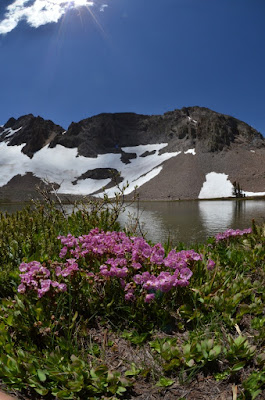 |
| Un-opened flower of columbine, Aquilegia formosa. This species was common along the south shore of Caples Lake. |
In my last post, I wrote about my trip to Round Top and
Forth of July Lakes in the northern part of the Mokelumne Wilderness. A perfect
time for exploring the high Sierra, I planned another visit. The following week
I took my oldest son and returned to explore the Emigrant Lake
We started at the western point of Caples Lake Caples
Lake Emigrant Lake with Caples
Lake Emigrant Lake
The sky was clear but the wind blew in strong gusts at Emigrant Lake Emigrant
Lake Emigrant
Lake to the west and Caples Lake
 |
| Three species of Castilleja. |
 |
| Frasera sp. I only found one individual of this species, but its large stature and very interesting flowers made it stand out. |
 |
| Wyethia, or "mule's ears". This plant was common. |
 |
| Calochortus. I only saw two individuals of this genus, both growing on a relatively rocky, sun-exposed slope near Caples Lake. |





